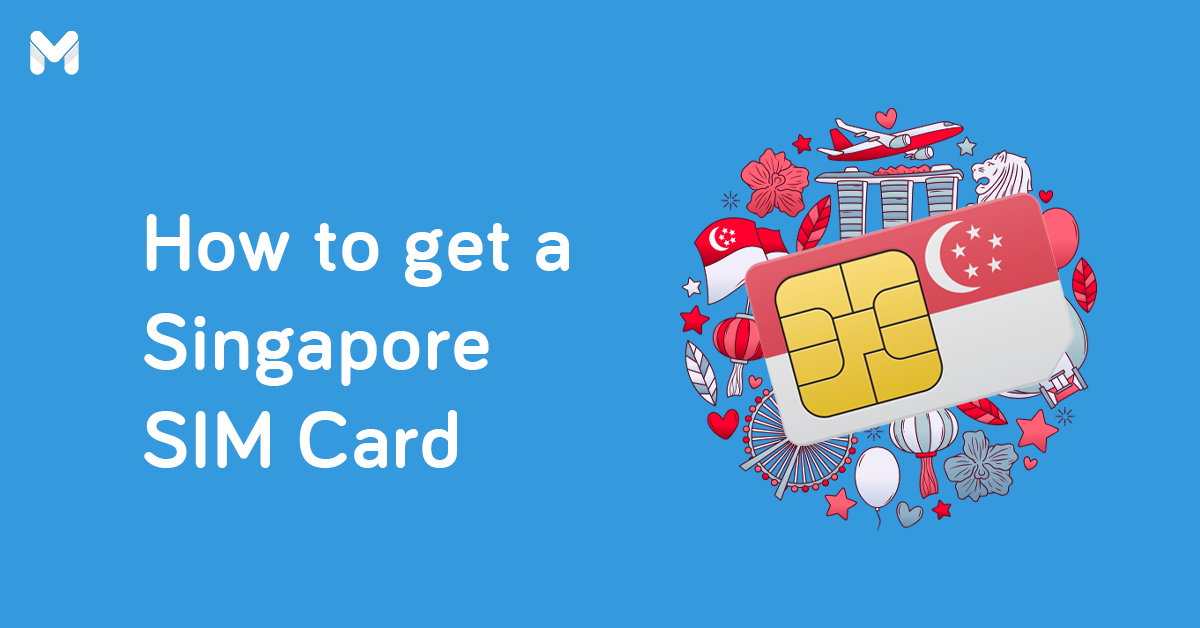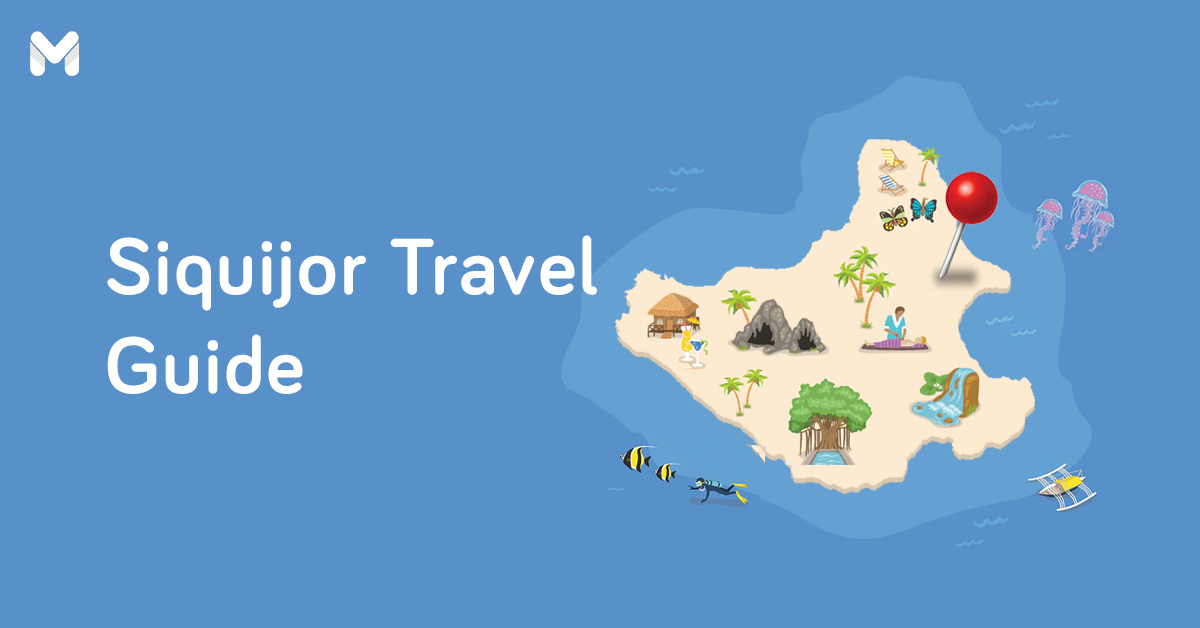The U.S. is home to many tourist attractions. With 50 states to choose from for your next visit, you can definitely find a thing or two to enjoy during your trip. Whether you’re into exploring national parks and historical landmarks, reveling in diverse gastronomical scenes, or immersing yourself in different art and cultural experiences, the Land of the Free has something of everything to satisfy your sense of adventure.
Planning to go on a trip to the U.S. soon? We hope you enjoy it! Before you fly out, make sure all your documentary requirements are ready—your U.S. visa being the most important.
If you don’t have one yet, check out below our guide on how to apply for a U.S. tourist visa in the Philippines.
🛡️ Enjoy Peace of Mind with Travel Insurance
Heading to the States? Since you'll be a long way from home, you need financial protection from travel-related mishaps and accidents. Get travel insurance via Moneymax today for as low as ₱299:
|
Provider
|
Starting Premium
|
Medical/Accidental Death or Disablement Coverage
|
Trip Cancellation Coverage
|
Baggage Loss/Damage
|
|
OONA Travel Insurance
|
₱299
|
Up to ₱5 million
|
Up to ₱128,000 | Up to ₱42,600 subject to ₱4,000 per item |
|
PGAI Travel Shield Insurance
 |
₱361
|
Up to ₱2.5 million
|
Up to ₱200,000 | Up to ₱50,000 subject to ₱10,000 per item |
|
PGA SOMPO TravelJOY Plus
|
₱463
|
Up to ₱2.5 million
|
Up to ₱70,000 | Up to ₱5,000 per item |
|
Cocogen Travel Excel Plus
 |
₱263
|
Up to ₱4.2 million
|
Up to ₱214,000
|
Up to ₱102,000 subject to ₱12,700 per item
|
What is a U.S. Tourist Visa?

Generally, a visa is an official document that gives a foreigner legal permission to travel to or enter a specified territory. This piece of document is typically stamped or glued in the bearer’s passport.
A U.S. tourist visa is like any other visa, except it’s specific to foreigners seeking entry to the U.S. as non-immigrants whose sole purpose for entering the country is to travel for a specific period of time.
Not all foreigners or international travelers are required to obtain a U.S. visa. Under the Visa Waiver Program, which is administered by the Department of Homeland Security (DHS), some nationalities are eligible to travel to the United States without a visa. Unfortunately, this isn’t the case for Filipinos, as the U.S. is not one of the visa-free countries that Filipinos can visit.
Getting a U.S. visa for Filipino tourists is not that complicated when you zoom into the nitty-gritty. First of all, know the main types of visas you can get as a traveler to the U.S.
👉 Types of U.S. Visa
There are two main types of U.S. visas, namely, an immigrant visa and a non-immigrant visa. The type of visa you’re required to get based on the purpose of your trip is defined by U.S. immigration law.
Immigrant Visa
This visa is intended for people who plan on living in the United States permanently. Not only does it grant admission to the country as a Legal Permanent Resident; it also takes the applicant one step closer to acquiring U.S. citizenship.
Non-Immigrant Visa
This visa is for those seeking to enter the United States for a short period of time. To acquire this visa, applicants must demonstrate strong ties to their country of residence to prove that they intend to depart the U.S. and return to their home country after their temporary stay. This type of visa is typically given to tourists, business people, students, and specialty workers.
There are other visa categories covered under the umbrella of non-immigrant visa. If you intend to travel to the U.S. only as a tourist, you need a B-2 non-immigrant visa, which covers tourism, vacation or holiday trip, and visit with friends or relatives, among a few other purposes.[1]
After identifying the type of visa you need as a tourist, you can start gathering your U.S. visa application requirements to initiate the application process. Read on to know how to apply for a U.S. tourist visa in the Philippines.
✈️ Book Your Trip Now, Pay Later with #UNOnow Loan!
Fulfill your travel goals without worrying about your budget. UNO Digital Bank has got your back! You can easily apply online for an #UNOnow Loan—no collateral needed—and get extra cash for booking your trips.
Enjoy quick approval and disbursement, as well as flexible payment terms, so you can travel now and pay later. Apply via Moneymax now!
U.S. Tourist Visa Requirements in the Philippines
-Nov-28-2023-04-29-27-4441-AM.png?width=600&height=400&name=Pics%20for%20blog%20-%20600x400%20(1)-Nov-28-2023-04-29-27-4441-AM.png)
The first step in the U.S. visa application process is to electronically complete and submit the DS-160 form, which you can access through the Consular Electronic Application Center website.[1]
When completing the DS-160 in the Philippines, you should have the following documents readily available:
- Passport
- Travel itinerary, if applicable
- Dates of your last five trips to the United States, if applicable. You may also be asked for your international travel history for the past five years.
- Curriculum vitae containing information about your education and employment history
- Recent colored photo with a white background[2]
After submitting your DS-160 form, you can already schedule an appointment for your visa interview. There’s a complete step-by-step guide below discussing this. For the visa interview, make sure to bring the following requirements:
- Passport with at least six months of validity beyond your period of stay in the U.S.
- Confirmation page of your DS-160 non-immigrant visa application form
- Application fee payment receipt
- Recent colored photo with a white background (used as a backup in case your photo upload during your DS-160 application fails)
Depending on the purpose of your travel, you might also be asked to provide additional U.S. tourist visa requirements from the Philippines. Additional requested documents may include evidence of the following:
- Purpose of your trip
- Intent to depart the United States after your trip
- Ability to pay all costs during your trip
Documents showing proof of your employment and family ties may be enough to show your intent to leave the U.S. after your trip and go back to your home country. Also, if you can’t personally cover all the costs for your trip, you can show proof that another person, whether a relative or otherwise, will cover some or all of the costs for your trip.
Read more:
- Europe, Here I Come: Schengen Visa Requirements in the Philippines
- To the Land of Sand and Gold: Dubai Tourist Visa in the Philippines
- Annyeong! South Korea Visa Requirements for Filipino Tourists in 2023
How to Apply for a U.S. Tourist Visa from the Philippines
-Nov-28-2023-04-32-41-6220-AM.png?width=600&height=400&name=Pics%20for%20blog%20-%20600x400%20(2)-Nov-28-2023-04-32-41-6220-AM.png)
Now that your requirements are ready, it’s time to go through the U.S. tourist visa application in the Philippines. All routine visa services are handled by the U.S. Embassy in the country. Just follow the steps below to start the process.
Step 1: Fill Out and Submit the D-160 Visa Application Form
To begin, fill out and submit the D-160 application form online. This will take about 90 minutes of your time. You can take breaks in between, but make sure to take note of your application ID before you exit the form so that you can go back and reload your progress.
Also, take an honest approach when answering the form. Give only correct information, and answer the questions as diligently and as completely as you can to avoid getting your application denied and having to reschedule your visa interview appointment.
Prepare to upload your photo as well to complete the form. When you’re satisfied with your answers, click on the Sign Application button and submit.[3]
Step 2: Pay the Visa Application Fee
Next step is to pay the U.S. visa application fee in the Philippines. The cost of your visa application depends on the type of visa you’re applying for. For non-immigrant and visitor visas, the fee is about US$185. While it’s listed in dollars, you must pay it in Philippine Peso. You can pay at any RCBC branch or pay online via PesoNet.
Note that your application fee is non-refundable and non-transferable. All non-immigrant visa application fee payments made on or after October 1, 2022 are valid for 365 days from the date of receipt of payment. You will have to schedule an interview appointment within this 365-day period.[5]
Step 3: Schedule an Appointment for Your Visa Interview
After paying the necessary fee, the next step is to schedule an appointment for your U.S. Embassy visa application interview. Applicants aged 14 to 79 are required to appear personally at the nearest U.S. Embassy to schedule an appointment. If you're 13 years old and below or 80 years old and above, there’s no need to show up for an interview unless otherwise advised by a consular officer.
Wait times for interview appointments vary by location, season, and visa category, so it’s advised to schedule an appointment as early as possible. Don’t forget to bring all the required documents for your visa interview.
You may also request to expedite your interview date if you have probable cause—e.g., attending a funeral, having a medical emergency, or starting a new school year. Note that situations like weddings, graduations, and conferences are not acceptable reasons for an expedited interview.
Step 4: Wait for the Consular Officer’s Advice Regarding Your Case Status
After the interview, the consular office will decide whether to issue or refuse your visa. If you’re approved, you’ll be informed of how and when your passport and visa will be delivered to your address.
If you’re denied, the consular officer will typically provide you an explanation and inform you of the reason for the rejection. Don’t lose hope if your case is the latter—not all visa denials are definitive.
Some denied visa applications just require further administrative processing. Additional wait times vary based on the individual circumstances of each case, but most cases get resolved within 60 to 180 days from the date of the visa interview. At the end of the administrative processing period, you’ll be informed if you are now qualified or remain denied.
Step 5: Arrange the Delivery of Your Visa
If you get approved, the consular officer will inform you of the available options for receiving your visa and passport. You can either have your visa delivered directly to your address, or you can choose to pick it up at the nearest LBC branch.
You can update your delivery address or LBC pick-up point at any time prior to 11:59 p.m. on the day of your visa interview. Just go to the U.S. visa application website to make the necessary changes.[6]
Are There Accredited Travel Agencies That Process U.S. Visa Applications?
If you’re wondering how to get a U.S. tourist visa through alternative channels like travel agencies, we have just the answer for you—and it’s the straightest one you can get.
According to official communications by the U.S. Embassy in the Philippines, there are no accredited travel agencies in the country that can guarantee the issuance of any immigrant or non-immigrant U.S. visa.[7]
Always proceed with caution and get your documents processed only by an authorized entity, which in this case is the U.S. Embassy. Don’t be enticed to take any shortcuts offered by other agencies. Since none of them are accredited, you may run into more risks than rewards by having your application processed outside of official means.
It might take a while to secure a U.S. Embassy Manila appointment, but it’s better to be safe than sorry!
💳 Bring the Best Credit Cards for Travel
Got all your travel requirements already? Before you fly, don't forget to bring a credit card for easier payments and travel perks. Check out some of your best options below:
| Credit Card | Travel Benefits |
|
UnionBank Rewards Card
|
|
|
Metrobank Platinum Mastercard®
|
|
|
Metrobank World Mastercard®
|
|
|
BPI Platinum Rewards Card
|
|
|
BPI Signature Card
|
|
How to Apply for a U.S. Tourist Visa from the Philippines: FAQs
Below are some frequently asked questions about U.S. tourist visa applications in the Philippines:
1. How soon before my trip should I apply for a U.S. tourist visa?
Your U.S. visa is one of the most important requirements for traveling abroad to the U.S. It’s only wise to apply for one well in advance of your intended travel date as there is no guarantee that you’ll be issued a visa right away. In fact, the best course of action is to delay finalizing your travel plans or buying tickets until you have received your visa.
Wait times vary per individual circumstance, so there’s no specific timeline for when you can receive your visa after submitting your application. For one, scheduling an interview appointment can take an average of 30 calendar days—but even that is not guaranteed.
Many factors are at play, and they can all affect the timeline of your visa application. Apart from its workload and staffing varying week to week, the U.S. Embassy in the Philippines also prioritizes travelers with urgent travel needs (i.e., a matter of life or death). On top of that, there’s a limited number of B-1 and B-2 applications they process every day, so your application can be shelved or delayed for many reasons.
Moreover, the wait time advertised on the website does not include administrative processing time, which might take up to 180 days. It’s also inclusive neither of the time it takes for the consular officer to adjudicate your application nor the mailing time for your passports and other documents.
All things considered, you should allot several months to a year for your U.S. visa application. If everything goes well, you can get your visa earlier than anticipated, but it’s always best to plan for the worst and hope for the best.
2. Am I required to get travel insurance as part of my U.S. tourist visa application?
While a travel insurance policy is not one of the required U.S. travel documents in the Philippines, it’s still a must-have when you’re traveling to any foreign country. Getting travel insurance will save you from future headaches of dealing with travel inconveniences like lost baggage, flight delays and cancellations, among others. Plus, it can also provide coverage in case of medical emergencies in an unfamiliar location.
3. How long is the validity of my U.S. tourist visa?
Usually, a non-immigrant U.S. tourist visa in the Philippines has a validity period of 120 months and allows for multiple entries to the United States. This means you can travel back and forth to the U.S. using your travel visa within the 120 months of your visa’s validity.
4. What can I do if my application for a U.S. tourist visa is denied?
The first thing you must do if your U.S. visa application in the Philippines gets denied is to find out why. Usually, the consular officer will let you know which section of the law has informed the decision. From there, you can plan your next steps. Here are some of the most common reasons why a visa application is denied:
- Incomplete information and supporting documentation
- Previously convicted of a crime involving moral turpitude or drug violations
- Previously convicted with a total sentence of confinement of at least five years
- Lack of adequate affidavit of support when required
- Misrepresented a fact or committed fraud to attempt to get a visa
- Previously stayed longer in the U.S. than authorized
Depending on the reason for your denial, you can re-apply for a visa by going through the same process. Note that you will have to pay the non-refundable application processing fee again. If you were denied under section 214(b) of the Immigration and Nationality Act (INA), you need to provide evidence supporting significant changes in your circumstances from your last application.[8]
5. Can I use a valid visa in an expired passport?
Yes, you can use your U.S. visa even if you have an expired passport. Don’t remove your visa from your expired passport if the former is still valid. You can use your visa with your expired passport along with a new valid passport the next time you travel to the United States.
Final Thoughts
The U.S. is home to top holiday destinations that you and your family can enjoy. So before the long holiday break comes, make sure you already know how to apply for a U.S. tourist visa in the Philippines.
To give you extra peace of mind, you should also get travel insurance to cover all your bases. Compare your options and apply via Moneymax today for a more seamless experience.
Sources:
- [1] Visitor Visa (US Department of State - Bureau of Consular Affairs)
- [2] Photo Requirements (US Department of State - Bureau of Consular Affairs)
- [3] Sample DS-160 (US Department of State - Bureau of Consular Affairs)
- [4] How to Complete an Online Non-Immigrant Visa Application (US Department of State Consular Electronic Application Center)
- [5] Fees for Visa Services (US Department of State - Bureau of Consular Affairs)
- [6] Change Documentary Delivery Address (US Travel Docs website)
- [7] U.S. Embassy Has No Accredited Travel Agencies (U.S. Embassy in the Philippines YouTube site)
- [8] Visa Denials (US Department of State - Bureau of Consular Affairs)








_1200x350.png?width=1109&height=324&name=UNOBank_Loan_-_Travel_(Sep_2023)_1200x350.png)
.png?width=150&height=95&name=UnionBank%20Rewards%20Visa%20card%20(1).png)




_1200x350.png?width=1200&height=350&name=Travel_Insurance_Generic_(Oct_2023)_1200x350.png)


